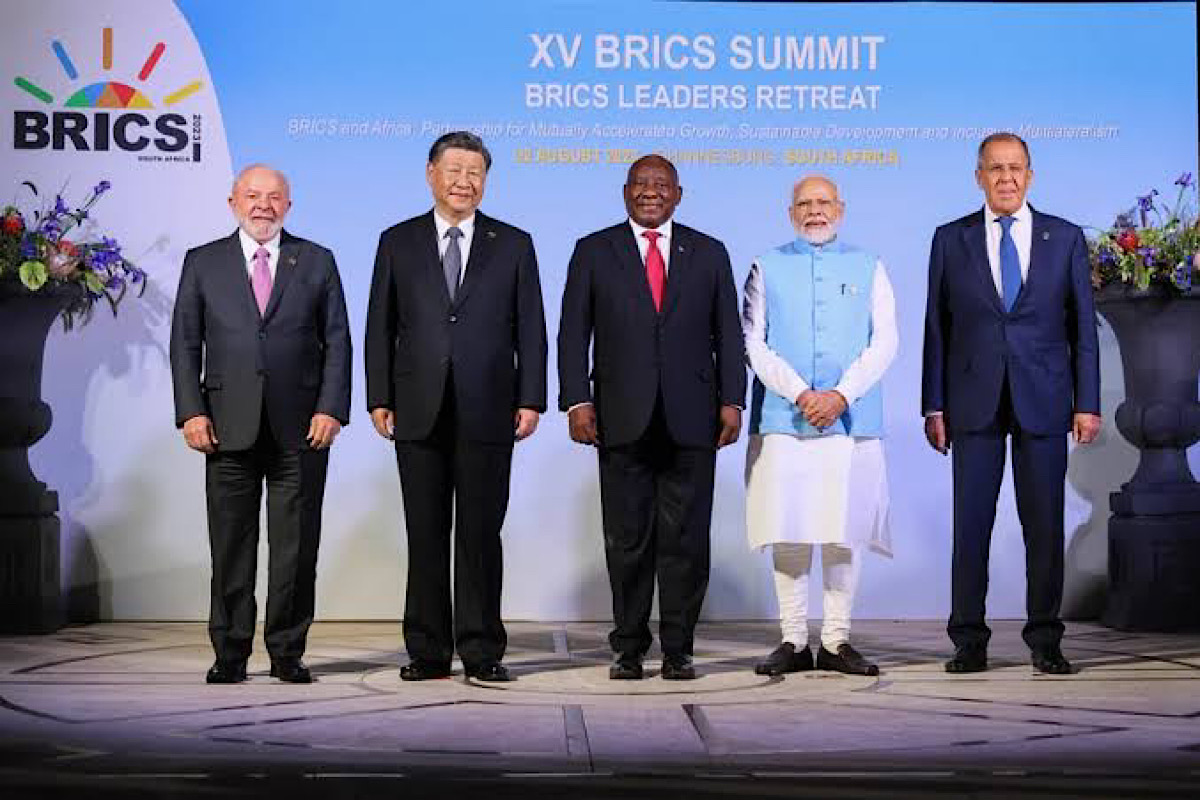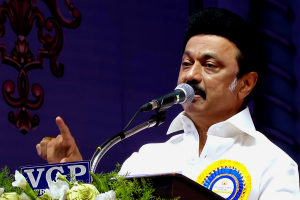In October 2024, BRICS leaders will convene in the Russian city of Kazan for its annual summit, in what is being seen as a diplomatic triumph for Russian President Vladimir Putin, otherwise an international pariah. In August 2023, the original fivemember BRICS group comprising the emerging economies of Brazil, India, China, Russia and South Africa was expanded to include four additional members: Egypt, Iran, Ethiopia and the UAE, with effect from January 2024. Saudi Arabia also participates in the group’s activities without joining formally. Argentina applied but then reneged on its commitment when the libertarian Javier Milei became its President.
This will be the first summit of the expanded BRICS. The term BRICs was originally coined by Jim O’Neill, chief economist of Goldman Sachs, in 2001. He showed that four countries were contributing more to the world economy than G-7 nations put together. In his 2003 paper, “Dreaming with BRICs: The Path to 2050”, he used economic modelling to show that China would pass Japan to become the second largest economy by 2015 and India would also pass Japan to become the third largest economy by the 2030s. The other two, Russia and Brazil, would also claim a larger share of the global GDP. The bloc was founded as an informal four-nation club in 2009 and added South Africa in 2010 in its only previous expansion. While China and India have beaten O-Neill’s projections, Brazil has been hopelessly caught in the middle-income trap and the Russian economy has now declined due to many factors, including a sharply falling population.
Advertisement
BRICS+ now commands almost 45 per cent of the world population, 36 per cent of the global GDP measured in PPP terms and almost 40 per cent of global trade. The corresponding shares of the G-7 are 10 per cent of global population, 30 per cent of global GDP (in PPP terms) and about the same share of global trade. The expanded BRICS with three major oil producing countries now would account for 43 per cent of the global oil production, though OPEC de termines the output and prices. Fifteen years ago, the failure of American regulators to prevent the global financial crisis which also exposed the hollowness of the Bretton Woods institutions, led to calls for redistribution of global economic power and responsibility in favour of the developing world, which found expression in BRICS.
Sickened by the continued Western stranglehold over the IMF and the World Bank, in 2014, BRICS established the New Development Bank (NDB) to meet the infrastructure financing needs of its members. Though its scale of operations and resources cannot match them even remotely, NDB has so far been the only concrete achievement of BRICS, and even this is struggling now in the face of stringent sanctions against Russia where it had to freeze all project financing. Russia holds 19 per cent of its subscribed capital of $10Bn, the same as the other members ~ Brazil, China, India and South Africa, with the rest being held by Egypt, Bangladesh and the UAE. In comparison, the World Bank and IMF have together $1.3 Tn of subscribed capital. BRICS remained a hotchpotch group of countries sharing more dissimilarities than similarities, with their diverse political systems, different scales of economies and different geopolitical interests which often clash with each other’s. It also lacks the cohesiveness of the European Union.
It has neither a formal structure with a common secretariat, nor do its decisions carry any binding legal authority. There is neither a trade pact that binds the members together, nor is there a common currency or a common philosophy. India and Brazil are the only functioning democracies, the rest are either autocracies in the veil of democracy like Russia or Egypt, or monarchies. Some are ruthless oppressors of their people like Iran, and some deny basic freedoms to their citizens, like China. Their views on geo political issues like the Russia-Ukraine war or attitude towards the West also differ radically. Many are feuding among themselves, like China and India, or Egypt and Ethiopia. They are unlikely to take any coordinated action on any global issues and each would like to use the BRICS for furthering its own interests and project its viewpoints on global affairs.
India would like the forum to be the voice of the global south, while China and Russia, and now Iran, would like the group to become a counterweight to the West and the USA, while others would like to nurture their relations with larger members. As a whole the group lacks a powerful collective voice to influence global issues. However, BRICS has endured its multiple contradictions and differences, defying the predictions of numerous Western analysts, and it might not be surprising that there are some 40 aspirants still wanting to join BRICS, opening up the possibility of further expansion. One of the countries looking for a place in the group is Pakistan, which is keen to join this year; another is Indonesia, the emerging economic power in Asia.
From time to time, BRICS has been calling for reforming the multilateral global institutions like the UN Security Council, IMF and the World Bank, and these calls have fallen on deaf ears. One reason is China which steadfastly opposes India’s permanent membership of the UN Security Council. It also wants to de-dollarise the global financing system so that in a multipolar world, the US dollar will dominate transactions in the USA, Euro in Europe and Chinese Renminbi in Asia. This too, has met with little success. The US dollar still accounts for almost 90 per cent of the global foreign-exchange transactions, and about half of all global trade is still denominated in US dollars. The introduction of Euro in 2002 had hardly impacted the dominance of the dollar and the Chinese Yuan is still struggling to become an international medium of exchange due to the nonconvertibility of its capital account.
For now, BRICS just wants to promote international trade among the member countries and their trading partners in local currencies. Russia will continue to use BRICS to propagate its anti-Western geopolitical agenda and to promote the use of alternative international payment systems to bypass instruments under Western control. This will not happen till the global economy becomes de-dollarised appreciably. Russia benefited from its ties with fellow members which have allowed the regime to weather the extensive Western sanctions. Brazil purchased discounted Russian fertilizer and has been one of the biggest buyers of Russian diesel.
India and China also bought discounted Russian energy commodities. But neither Brazil nor India desires to cut ties with the West or align themselves with an anti-Western bloc ~ both have been fence-sitters when it comes to the war in Ukraine, reluctant to support the West. But both would rather commit themselves to reform of global governance without trying to upset the current international system radically. The other country that gains substantially is Iran, whose BRICS membership gives it a strategic foreign policy victory and possibly some political legitimacy, though not much economic gains as most BRICS members wouldn’t risk the strict US sanctions for trading with Iran. China and Russia share the same ambitions to deepen multilateralization by replacing the USA as the global hegemon, so that alternative financial and tech platforms will become immune to US pressures. It is due to their joint efforts to lure more countries that BRICS may now be poised for another expansion.
In fact, the last expansion was practically forced by China. But apart from China and Russia, who are of course on the same page as far as the West, and in particular the USA, is concerned, other developing countries are also weary of West’s moralising and grandstanding on issues which serve only Western interests. They want to hedge against the hegemony of the dollar after seeing what US sanctions have done, to Iran and Russia, for exam ple, and resent what is happening in the Middle-east where thousands of innocent civilians are being killed with brazen Western support. The West may champion democracy within its own countries, but it is firmly against democratising the global order.
The apprehension of the West shared by the global south explains their increasing desire for greater multipolarity in the world order which safeguards against hegemonic power, which is why so many want to join a benign group like BRICS that can promote multipolarity. Xi Jinping was speaking for many countries when he said at the 2023 summit, “We do not barter away principles, succumb to external pressure, or act as vassals of others. International rules must be written and upheld jointly by all countries based on the purposes and principles of the UN Charter, rather than dictated by those with the strongest muscles or the loudest voice.” Some of the new members – Egypt and Ethiopia – and even an old member like South Africa – have only symbolic importance as members of the BRICS. BRICS membership does facilitate economic benefits like bilateral deals which are often struck at its summits, especially with China which is still cautious about opening its vast markets to others. India may use its growing economy and good bilateral relations with most newly inducted members to strengthen its voice within the block. An expanded BRICS may stimulate the global south’s voice in geopolitics, but its economic gains as yet remain rather uncertain.
(The writer is a commentator, author and academic. Opinions expressed are personal)











